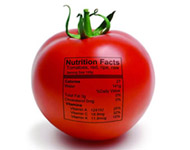Nutrition and Health Sciences, Department of

Department of Nutrition and Health Sciences: Faculty Publications
Effects of tunable, 3D-bioprinted hydrogels on human brown adipocyte behavior and metabolic function
Document Type
Article
Date of this Version
2018
Citation
Acta Biomater. 2018 April 15; 71: 486–495.
Abstract
Obesity and its related health complications cause billions of dollars in healthcare costs annually in the United States, and there are yet to be safe and long-lasting anti-obesity approaches. Using brown adipose tissue (BAT) is a promising approach, as it uses fats for energy expenditure. However, the effect of the microenvironment on human thermogenic brown adipogenesis and how to generate clinically relevant sized and functioning BAT are still unknown. In our current study, we evaluated the effects of endothelial growth medium exposure on brown adipogenesis of human brown adipose progenitors (BAP). We found that pre-exposing BAP to angiogenic factors promoted brown adipogenic differentiation and metabolic activity. We further 3D bioprinted brown and white adipose progenitors within hydrogel-based bioink with controllable physicochemical properties and evaluated the cell responses in 3D bioprinted environments. We used soft, stiff, and stiff-porous constructs to encapsulate the cells. All three types had high cell viability and allowed for varying levels of function for both white and brown adipocytes. We found that the soft hydrogel constructs promoted white adipogenesis, while the stiff-porous hydrogel constructs improved both white and brown adipogenesis and were the optimal condition for promoting brown adipogenesis. Consistently, stiff-porous hydrogel constructs showed higher metabolic activities than stiff hydrogel constructs, as assessed by 2-deoxy glucose uptake (2-DOG) and oxygen consumption rate (OCR). These findings show that the physicochemical environments affect the brown adipogenesis and metabolic function, and further tuning will be able to optimize their functions. Our results also demonstrate that 3D bioprinting of brown adipose tissues with clinically relevant size and metabolic activity has the potential to be a viable option in the treatment of obesity and type 2 diabetes.
Included in
Human and Clinical Nutrition Commons, Molecular, Genetic, and Biochemical Nutrition Commons, Other Nutrition Commons


Comments
Copyright 2018 Acta Materialia Inc.
doi:10.1016/j.actbio.2018.03.021